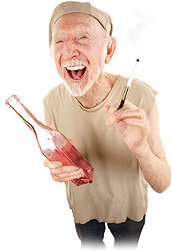 Hello Adventures in Homebrewing,
Hello Adventures in Homebrewing,
I recently purchased your County Fair concord juice. I am planning to use 4 cans to make 5 gallons. I noticed the can shows 5 tsps of acid blend for 4 cans, but your wine recipe page online shows to use 1 tbsp [3 tsps] with 40# of fresh concord grapes and none in 80# version of the recipe.
Why is there a difference? I don’t want the wine to have a “bite” it can have with too much acid. What do you suggest?
Thanks Kelly
———-
Dear Kelly,
I can certainly understand your concerns. One of the last things you want to do when first learning how to make your own wine is to make a simple mistake that ends up ruining the wine.
Fortunately, for us home winemakers, the County Fair products have all had their acidity level standardized. This means that if you add the amount of Acid Blend called for in the homemade wine instructions on the side of the can, your wine will have the right amount of acidity to bring your wine into perfect balance.
You may have also noticed that you have a choice of using anywhere from 1 to 4 cans of concord to make five gallons, depending on how much body you want the wine to have. As the number of cans you decide to use goes up, the amount of Acid Blend you will need goes down.
This is counter-intuitive to some beginning winemakers. Many believe that the more fruit involved, the more Acid Blend you need to add. The real truth of the matter is that most of the acid that is in a wine recipe comes from the fruit itself, or in this case, the cans of fruit. So if you are using more cans, you need less Acid Blend to augment the acidity level.
This is also why the two Concord wine recipes on our Wine Recipe Page call for different amounts of Acid Blend. One is using 40 pounds of Concord and needs some Acid Blend, whereas the other calls for 80 pounds and needs no Acid Blend. This leads to another one of my favorite wine making tips:
“Don’t think you’re smarter than the wine recipe. Follow it.”
Best Wishes,
Customer Service at Adventures in Homebrewing
———————————————————————————————————
Ed Kraus is a 3rd generation home brewer/winemaker and has been an owner of E. C. Kraus since 1999. He has been helping individuals make better wine and beer for over 25 years.
Category Archives: Q&A
Our Wine Tastes A Little Bitter. What Should I Do?
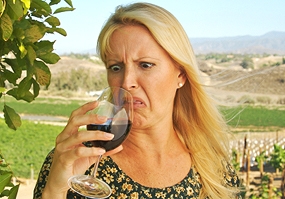 Hello Adventures in Homebrewing:
Hello Adventures in Homebrewing:
We have 17 gal of 2009 Syrah, it tastes a little bitter to us. Should we add conditioner before bottling?
Thank you
Bobbi
———-
Hello Bobbi,
Wine Conditioner is not designed to cover up bitterness. It is a wine sweetener for people that do not like their wines dry. A better avenue would be to try to figure out why the wine is bitter. Then see if it can be remedied, not masked.
There are two primary faults that can cause bitterness in a wine:
- Excessive Tannin
Tannin is a bitter acid that is found in the seeds, stems and skins of the grapes. If the grapes are over crushed, or over pressed, or left in the fermentation too long, too much tannin can be extracted into the must. - Over Oxidation
This is essentially over exposure to air. If the finished wine sits in a partially-full wine carboy or plastic fermenter along with air, the wine can begin to take on the effects of oxidation. It can be noticed as a slight cough syrup flavor. You may also notice a subtle change in the wine’s color. It the case of a Syrah, a shift to a orange hue.
Where to Start
There are a couple of wine making products that may be of help. If the Syrah has never been treated with bentonite, I would start there. Bentonite is a fining agent that can cause excessive tannins to fall out of a wine. Bentonite will also help to reduce the effects of oxidation, indirectly, by dropping out oxidized color pigmentation.
If you feel that oxidation is the problem, I would also follow the bentonite finings with gelatin finings on the next day. I would also suggest adding a dose of sodium metabisulfite during the last stir of the wine. This is to help drive any oxygen and to help preserve the wine.
Allow 1 to 2 weeks for the deposits to settle out from the finings and then rack the wine into another wine carboy.
Happy Wine Making
Customer Service
———————————————————————————————————
Ed Kraus is a 3rd generation home brewer/winemaker and has been an owner of E. C. Kraus since 1999. He has been helping individuals make better wine and beer for over 25 years.
Did I Ruin My Wine With Too Much Sugar?
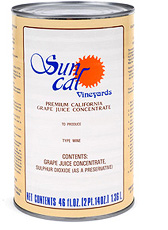 Dear Kraus —
Dear Kraus —
I have started 5 gals. of wine using your SunCal concentrate along with 6 ½ lbs. of sugar and one pack of wine yeast. It has been fermenting for 3 weeks. I have racked it and checked it with a hydrometer. It had a reading of about .995 SG. When It started it was at 1.075. That is enough sugar to make 10% alcohol. I then added 2 lbs more of sugar and another pack of yeast. Now it has stopped fermenting. Is the batch ruined or what can I do to start it back to fermenting.
Please help,
Fred D.
———-
Hello Fred,
If you followed the homemade wine instructions that comes with the can of SunCal Vineyards concentrate, it calls for 6-1/2 pounds of sugar. As you have stated, this will end up making a wine that has 10 percent alcohol. I can only assume that you added 2 more pounds after the fermentation for the purpose of raising the finished alcohol level of the wine.
A simple way to see if you were successful is to take another gravity hydrometer reading. If the yeast was able to get the wine brewing, your specific gravity reading should, again, be back down to about .995. If the yeast wasn’t able to get the wine brewing again, you will have a reading around 1.010.
You might like to know that the 2 pounds of sugar you added to this 5 gallon batch of wine, increased the potential alcohol of the wine by roughly 2 percent–that is if the sugars are fermented into alcohol.
This touches upon one of my wine making tips:
“For every pound of sugar you add to a 5 gallon batch of wine, you increase the potential alcohol by 1 percent”.
Technically, this is not exactly correct, but it is very, very close. Also notice I use the word “potential.” Just because you add more sugar does not mean the yeast will automatically be able to convert it into alcohol. As the alcohol level of a wine increases, so does the difficulty level for the wine yeast in fermenting. If one is not careful they can end up with a wine that is disgustingly sweet.
For more information on making higher-alcohol wines, I suggest you read over the following two articles listed on our website, “Making High Alcohol Wines” and “How Much Alcohol Do You Really Want“.
Happy Wine Making
Customer Service
———————————————————————————————————
Ed Kraus is a 3rd generation home brewer/winemaker and has been an owner of E. C. Kraus since 1999. He has been helping individuals make better wine and beer for over 25 years.
My Wine Cork Stoppers Keep Pushing Back Out
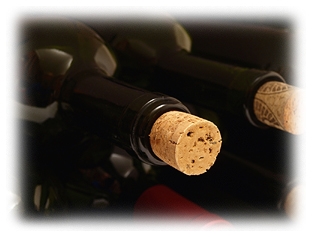 Customer Service:
Customer Service:
I have made a lot of wine over the years with nearly every fruit imaginable.
It seems, however, I have never understood the correct corking process and rarely got a cork stopper “home” without it wanting to push back out. I use a plunger type corker.
I have inserted nylon fishing line between cork and bottle neck and withdrew afterward, with no success and also a long, small sized syringe needles, to drain of the air. I am looking for an absolutely minimum amount of airspace.
Someone now told me, that I was really missing the boat. The air is supposed to be expelled while pushing the cork bottle stoppers in. How is that possible? You have a Cylinder into which you are pushing a piston and thereby compressing the existing air.
Please explain, if you can, and perhaps suggest a better corker model.
Thank You,
George W.
———-
Dear George,
Having the wine corks partially push back out is a fairly common occurrence among home wine makers. When the cork is inserted into the wine bottle, some of the air will expel, however, most will initially stay trapped in the bottle. This is what is causing the wine corks to push out.
You should keep pushing them back down periodically, until they want to stay. Depending on the size and quality of the cork stopper being used, typically within a day the pressure will neutralize enough for the corks to stay in place.
The average amount of airspace that should be between your wine and the wine cork is about 3/4 inch. If you leave less than 3/4 inch air space the chance of your corks pushing out will be greater and vice verse.
The type or style of corker you use does not play a role in this issue, other than to say that some poorly designed corkers can pinch or deform the cork while inserting it. However, this problem would only help to alleviate you problem not cause it.
Happy Wine Making
Customer Service
———————————————————————————————————
Ed Kraus is a 3rd generation home brewer/winemaker and has been an owner of E. C. Kraus since 1999. He has been helping individuals make better wine and beer for over 25 years.
How Can I Fix My Leaking Wine Barrel?
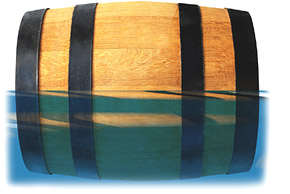 Hello:
Hello:
Is there a service that can repair leaking oak wine barrels? I had used mine for many years and did not do it for a while and now the barrel leaks when I try to put fluid into it.
Thanx,
Steve
———-
Good Afternoon Steve,
There is no repair service that we know of for individual wine barrels, but here are a couple of things you can try that might get your wine barrel back into service.
Keep adding water to the barrel until the wood has had time to swell back up. This could take a couple of days if not a week. If this fails, try submerging the barrel in a bath of water while also keeping the barrel full of water. Do this for several days. Then let the outside dry out for a couple of days and see if the barrel starts to leak again.
If these ideas do not work, you have probably lost the barrel, but I’m guessing this is going to solve your problem.
Another One Of My Wine Making Tips:
Once a barrel is used you should always keep it full of liquid, whether it be with wine or water. If with water, also add Sodium Metabisulfite and Citric Acid to keep it from spoiling. You will also need to replenish the Sodium Metabisulfite every 6 months.
You may want to take a look at the Directions: Barrel Sterilizing Kit that is listed on our website for dosage and more detailed homemade wine instructions on using a wine barrel.
Happy Wine Making,
Customer Service
———————————————————————————————————
Ed Kraus is a 3rd generation home brewer/winemaker and has been an owner of E. C. Kraus since 1999. He has been helping individuals make better wine and beer for over 25 years.
Do New Wine Bottles Need To Be Sanitized?
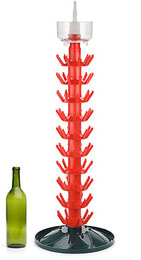 Dear Winemaster Kraus,
Dear Winemaster Kraus,
Do I need to sanitize the new out of the box wine bottles? I got two cases from you folk last week.
Thanks Kevin
———-
Hello Kevin,
The quick and painful answer to your question is, Yes. Just like any other homemade wine equipment and supplies, you need to treat them with a Sodium Metabisulfite and water solution before filling them with wine–1 teaspoon per gallon of water is the dosage.
You can treat the wine bottles in one of two ways:
- Pour an inch worth of the solution in each wine bottle. Let the wine bottles stand up-right for 20 minutes and then drain.
- Use our Sulphatizer and Bottle Tree combination. The Sulphatizer shoots a stream of the sanitizing solution into the wine bottle, releasing the sulfite gases to linger inside. The bottle is then placed on the Bottle Tree and allowed time to drain.
Either one of these methods should be employed within an hour or so of filling, not the day before or anything like that.
While We’re On The Subject Of Wine Making Cleanliness…
Corks, vinyl hoses, and other wine making materials should be sanitized as well when bottling wine. Counter-tops and other surfaces around the general bottling area should be treated with the same water/sulfite solution.
All of these careful steps are done in the name of keeping your wine from becoming the victim of spoilage, a needless outcome for any wine. Sodium metabisulfite is cheap and easy to use, so why not do it?
Best Wishes,
Customer Service
———————————————————————————————————
Ed Kraus is a 3rd generation home brewer/winemaker and has been an owner of E. C. Kraus since 1999. He has been helping individuals make better wine and beer for over 25 years.
Can I Use Tap Water When Making Wine Kits?
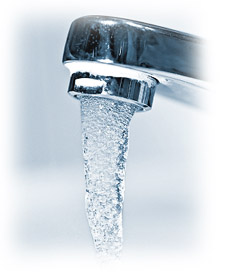 Hello,
Hello,
I am just getting ready to get my first batch of wine brewing with one of your wine making starter kits. I have a quick question. Is it was ok to use tap water from my sink to make this wine kit? Do I need to get bottle water from the store or what? We have good water here in our town, but I’m sure it has chlorine and other stuff in it.
Thanks,
Gerald
__________
Dear Gerald,
This is a great question that many beginning winemakers ask. Water is one of the main ingredients in any wine, so when you are first learning how to make your own wine, the source of water should be questioned.
Chlorine is the main issue with most municipal water systems. A trace amount of chlorine is added to the water to keep microbial growth at a standstill. For most urban areas the tap water is fine to use, but in some areas enough chlorine can be added to inhibit the fermentation. That’s the bad news. The good news is that chlorine can easily be taken out of the water before using.
This is another one of my simple wine making tips that I tell beginning winemakers: If you suspect that the tap water in your area has high levels of chlorine, I suggest that you draw the tap water a day ahead of time and allow it to sit open in a bucket overnight. Most of the chlorine will dissipate into the air, bringing it down to a level that is insignificant to making wine.
Happy Wine Making
Customer Service
———————————————————————————————————
Ed Kraus is a 3rd generation home brewer/winemaker and has been an owner of E. C. Kraus since 1999. He has been helping individuals make better wine and beer for over 25 years.
Can I Bottle My Wine In Beer Bottles?
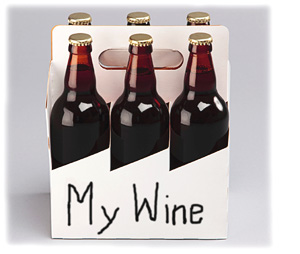 Hello
Hello
Can I bottle my wine in beer bottles and use bottle caps or do I have to use cork bottle stoppers because it is wine? I have the stuff to bottle beer but I do not have wine making materials for bottling. If I have to buy corks for beer bottles what ones should i get?
I am planning to make mostly fruit wines. Right now I have a blackberry wine working that I made from frozen blackberries.
Thanks Manny__________
Hello Manny,
In theory, there is no reason why you can’t use beer bottles and bottle caps to bottle your wine. You would not have to buy corks. In fact, there are not really any actual cork stoppers that would work that well on beer bottles, so bottle caps would be preferred in this instance. It would be no different than using screw cap wine bottles to bottle wine–in theory…
In reality, bottling wine in beer bottles is a lot of extra work. Whether you bottle in a 12 ounce beer bottle or in a 25 ounce wine bottle, its still the same amount of work per bottle, so basically you’re doubling the amount of time and effort to bottle the wine. Trust me I’ve been there.
There’s also the issue of aging. The ability of the wine to improve with aging may be impaired by using beer bottles, not because of the bottle, but because of the bottle caps. Cork stoppers allow a wine bottle to breath slowly or exchange air over time. This is was causes aging to occur… a very slow infusion of air. Bottle caps do not allow for this exchange. Bottle caps don’t let any air through at all. This can limit how much the wine can age.
In the case of most fruit wines such as your blackberry, this is not so important, but in the case of heavier red grape wines, where successful aging is a must, this could very well be detrimental to the wine.
Happy Wine Making
Customer Service
———————————————————————————————————
Ed Kraus is a 3rd generation home brewer/winemaker and has been an owner of E. C. Kraus since 1999. He has been helping individuals make better wine and beer for over 25 years.
Can Your Tuff-Tanks Be Use For Secondary Fermentations?
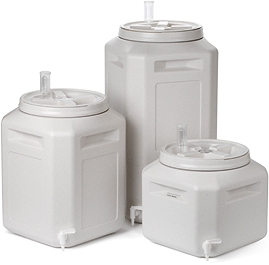 Hi Kraus,
Hi Kraus,
I am using the 14 gal tuff-tank for the primary fermentation and like it. My questions are can you also use the 14 gal tuff-tanks and other similar plastic fermenters for the second stage fermentation instead of glass carboys and Is there pros’s and con’s?
I thank you for your great service, JL.
__________
Dear JL,
The only thing you need to be concerned about when using our Tuff-Tanks or any other plastic fermenter in a secondary fermentation situation is head-space. This is the area between the surface of the wine must and the fermenter’s lid.
Air can be a spoiler of wine. If the air exposure is excessive, it can allow mold to grow on the wine’s surface, and it can also cause the wine to brown or oxidize. These are thing that don’t happen overnight, but if enough time is given, they can occur. For these reasons, head-space is always an area of concern.
The good news is air exposure and its effects are of little issue while the wine is still fermenting in a plastic fermenter. During the fermentation, CO2 gas is being given off which protects the wine must from air.
What this means for the winemaker is that during the primary fermentation, there is so much protective gas coming off that you don’t even need a lid on the plastic fermenter. Just a thin towel or similar will work fine. And, during the secondary fermentation, having head-space is okay as well, just as long as a fermentation of some sort is still occurring.
After the fermentation has stopped, or the air-lock has stopped bubbling, the head-space is still okay, so long as you do not remove the lid from the plastic fermenter. This is because the head-space is filled with CO2 gas, not air, at that point. The gas is heavier than air, so it does not want to escape from the plastic fermenter. It wants to stay as a protective blanket over the wine.
However, once the lid has been removed after the fermentation is complete, all bets are off. Something will have to be done at that point, whether it be transferring the wine from the plastic fermenter into carboys for aging, or just going ahead and bottling the wine.
JL, I hope this information clears things up for you. If there is still something you don’t understand, please contact us so we can discuss it further.
Happy Wine Making
Customer Service
———————————————————————————————————
Ed Kraus is a 3rd generation home brewer/winemaker and has been an owner of E. C. Kraus since 1999. He has been helping individuals make better wine and beer for over 25 years.
Help! My Fermentation's Not Bubbling!
 Hi, I have a question. This is day 5 of fermentation for my apple wine. It’s been in plastic fermenters. I just siphoned it into a couple of glass jugs and put the air-locks on. How long should it take for the air-locks to start peculating. I do not see any signs of the wine brewing. If it doesn’t start in 24 hours does that mean my wine is bad?
Hi, I have a question. This is day 5 of fermentation for my apple wine. It’s been in plastic fermenters. I just siphoned it into a couple of glass jugs and put the air-locks on. How long should it take for the air-locks to start peculating. I do not see any signs of the wine brewing. If it doesn’t start in 24 hours does that mean my wine is bad?
Thanks, Bill__________
Hello Bill,
Before we can really answer your question we need to get a hydrometer reading of the wine must. It is very possible that the apple wine has already completed its fermentation, and there is no more bubbling to be done. We have had fermentations done here in as little as three days.
If the gravity hydrometer shows a specific gravity reading of .998 or less, this means the fermentation has completed. The only thing you would need to do in this instance would be to continue on with any recipe directions you may be following. No bubbling would be expected with such a specific gravity reading.
If the gravity hydrometer shows a specific gravity reading above .998, this means that you should see some bubbling, and you say you are not. This does not mean the apple wine is bad. It just means that the fermentation as stop prematurely, and we need to figure out why.
I would suggest going over the Top 10 Reasons For Fermentation Failure. These 10 reasons cover well over 95% of the stuck fermentations we have dealt with. See if any of these reasons could be a candidate for your issue.
Happy Wine Making
Customer Service
———————————————————————————————————
Ed Kraus is a 3rd generation home brewer/winemaker and has been an owner of E. C. Kraus since 1999. He has been helping individuals make better wine and beer for over 25 years.
